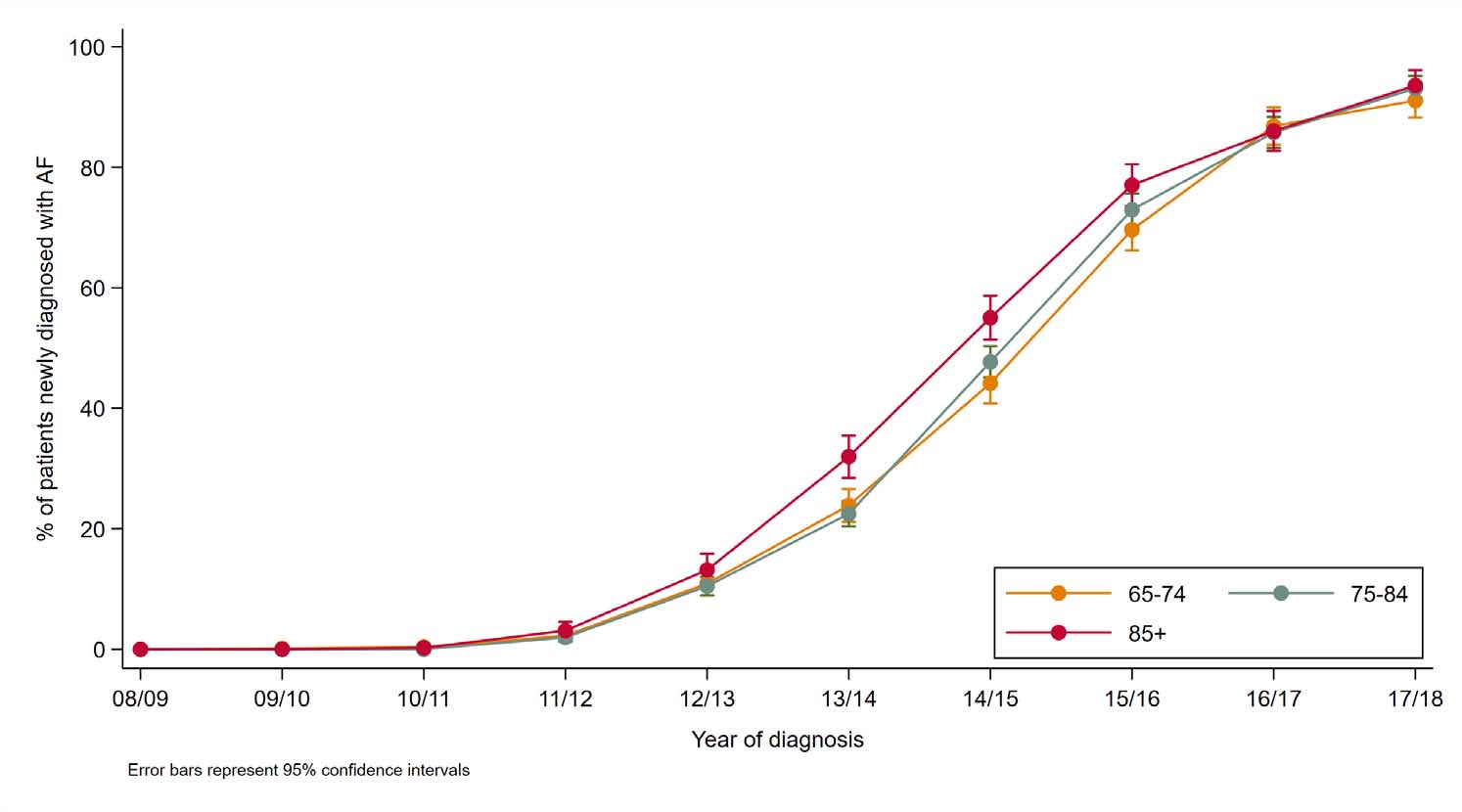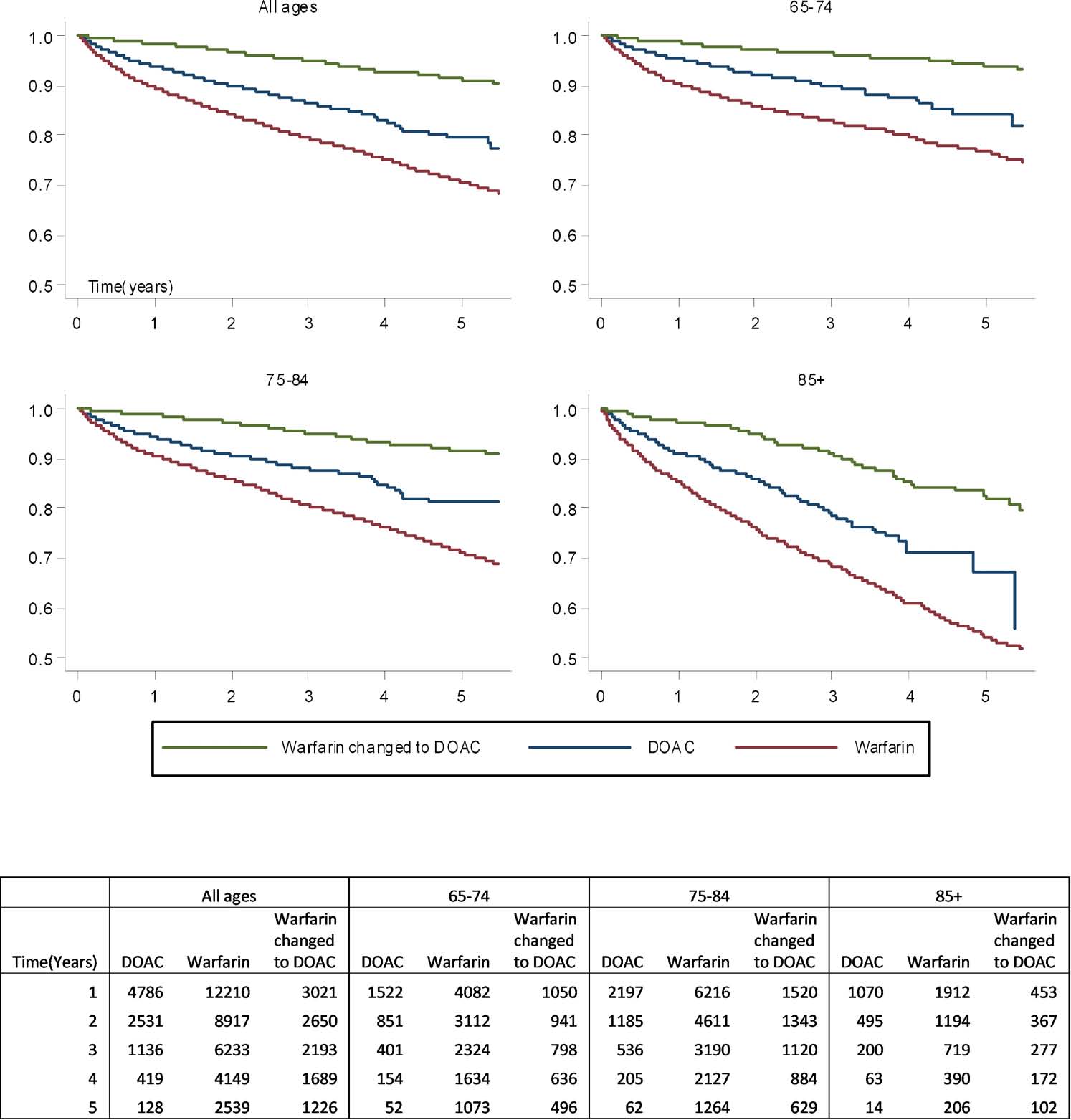Lund J. Open Heart. 2021 Aug;8(2):e001737.
The prospective advantage from anticoagulation increases with age as risk of stroke in atrial fibrillation (AF) increases with age, while so do risk of bleeding complication. Historically, older people have been less likely to acquire anticoagulation in spite of indication that the potential advantage is higher as compared to the risk. In 2019, the UK National Screening Committee reviewed patterns of anticoagulation prescribing for AF. It showed that there was inadequate evidence of optimised compliance, and around prescribing patterns of anticoagulation in AF, in part because of lack of evidence about anticoagulation endurance across time. Therefore, Lund J, et al. conducted a study in which the aim was to explain this evidence of patterns of anticoagulation prescribing and persistence by 10-year age group across the age of 65 years.
Electronic general practice records of patients in England, who attended an influenza vaccination aged ≥65 years and were diagnosed with AF between 2008 and 2018 were enrolled in the descriptive cohort study. Patients were distinguished by 10-year age group and year of diagnosis. Proportion anticoagulated, type of anticoagulation (direct oral anticoagulant (DOAC) or warfarin) initiated at diagnosis and endurance with anticoagulation across time were outlined.
42,290 patients with newly recorded AF were present in the study. At diagnosis, 28% (11,722), 45% (19,055) and 27% (11,513) of patients were aged 65–74, 75–84 and 85+ years, respectively; 49% (20, 850) of patients were female in the total sample. Both group and period impacts are seen in the prescription of anticoagulation across the 10 years of the study. In the all age groups, the percentage of patients anticoagulated increased among 2008 and 2018. This change is most marked in 85+ years patients with significant increase from 27% (679) in 2008–2010 to 74% (865) in 2016-2018. The 65-74 years’ age group increased anticoagulation from the higher baseline of 55% (1482) to 86% (937), and for the 75–84 years’ age group from 54% (2339) to 86% (1430) in the same time period. (Figure 1, Table 1)
Table 1: Incident cases and anticoagulation by age and year of diagnosis


Figure 1: Anticoagulation for atrial fibrillation (AF) by cohort; age and year of diagnosis.
No patients diagnosed with AF were prescribed a DOAC in 2008/2009, however 70% (1222) received a DOAC within 1 year of diagnosis by 2017/2018. DOACs constituted 92% (1222/1319) of first anticoagulant prescriptions for AF in 2017/18. The use of DOACs elevated immediately in all age groups, with the largest increases shown among 2012 and 2016. Initially, the 85+ years age group showed highest rate of increase. There was no substantial difference among age groups in the proportion given a DOAC from 2016 onwards (Figure 2).

Figure 2: The proportion of first anticoagulation prescriptions for newly diagnosed atrial fibrillation (AF) that are for a direct oral anticoagulant.
All age groups had high endurance with anticoagulation, with the highest rate of reduction in the first year. The younger age groups had higher anticoagulation endurance at all time points. At 5 years, the survivor function for anticoagulation was 0.79 (95% CI 0.78 to 0.81) in 65–74 years’ patients, 0.73 (95% CI 0.72 to 0.75) 75–84 years’ patients and 0.58 (95% CI 0.54 to 0.61) in 85+ years’ patients. (Figure 3).

Figure 3: Anticoagulation persistence by age
Of those who received a single type of anticoagulation, had highest endurance in those prescribed a DOAC. At 5 years, the probability of continuing anticoagulation for those only prescribed a DOAC was 0.79 (95% CI 0.77 to 0.82) compared with 0.71 (95% CI 0.71 to 0.76) in those only prescribed warfarin. (Figure 4).

Figure 4: Anticoagulation persistence by age and type. Due to small patient numbers those who have transferred from direct oral anticoagulant (DOAC) to warfarin are not presented.
It was concluded that the use of anticoagulation for AF has elevated across the period 2008–2018, with the highest increases in patients with aged over 85 years, both in terms of initiation and endurance as compared to previously outlined. DOACs now exhibited the extensive majority of anticoagulation prescriptions for newly diagnosed AF. This study shows that DOACs are correlated with greater long-term endurance in older adults as compared to warfarin.

